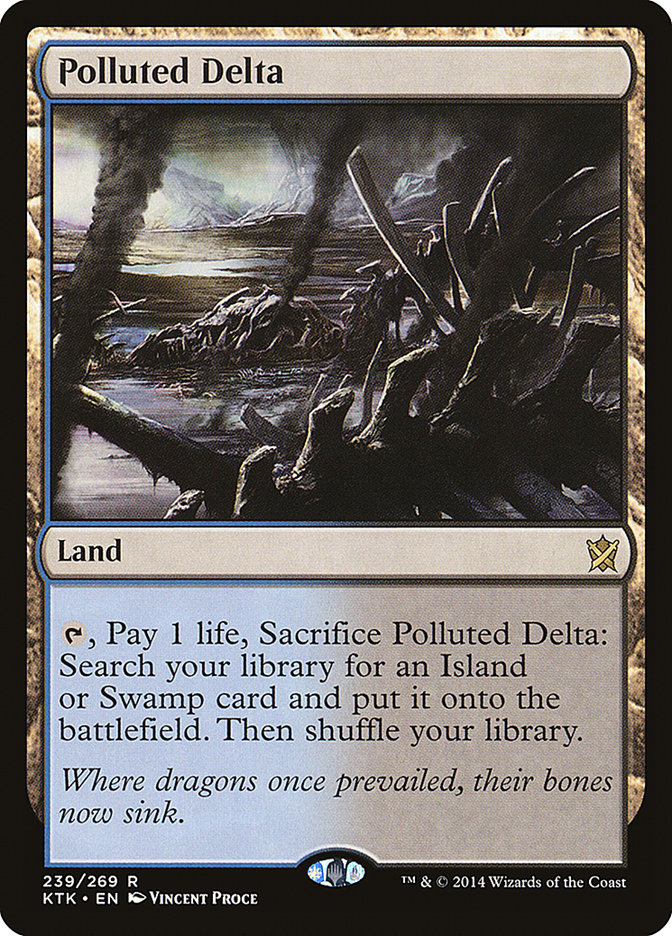This weekend, I tried, I failed, I learned, and I grew. Prereleases have the opportunity to be learning experiences, and it can also be a lesson in
variance or, as some might call it, dumb luck. Sealed events especially can certainly teach you what cards are actually good, which are mediocre, and which
ones you thought were excellent (and might be excellent in other situations), but actually turn out to be trash. You learn which way the format leans too.
Is this a bomb-dependent format, meaning that whoever draws their first bomb wins, or is it a format where consistent synergy and flexibility is key?
Usually, bomb-dependent formats are seen as bad Limited formats because there’s more dumb luck about it. Formats like Scars of Mirrodin, where most of the
efficient, flying creatures were the best cards to play regardless of your strategy, as removal was spotty and inconsistent, are still known as bomb-heavy
formats, while Innistrad and Lorwyn Limited seemed much more consistency-oriented to me.
This weekend was my first experience with Khans in a Limited capacity, as I’d missed that Prerelease and hadn’t run a MTGO draft since summer. It was
completely different than I expected, and it was an important reminder of how to build effectively for Limited.
Last week
I discussed what I thought might be the best choices for the Prerelease, and I landed somewhere between Temur and Abzan. Saturday eventually came, and it
was time to play.
On Saturday, we had an unseasonably warm day, so I had just completed a very lengthy walk to enjoy the clear skies and mild breeze. I got to my shop and,
along with 93 other players, we all took our turns picking our Prerelease packs, sitting down, hearing a speech about how cheaters are the worst people
ever (I don’t disagree), and then we cracked our packs. I eventually sided with the savagery of Temur, hoping that its big creatures and inevitability
would keep me on top of the other, cuter decks. As part of the shop’s anticheating policy, we all took a shot of our unsorted pools, piled out pack by
pack. Here’s mine.
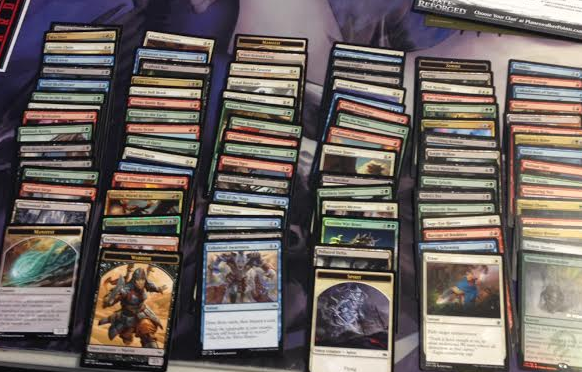
For those who can’t make out the cards very well, you’re not alone; I actually missed a couple of my best cards in glancing over my pile, but for the sake
of ease for those just looking to casually read about Sealed, here were my mythics and rares.
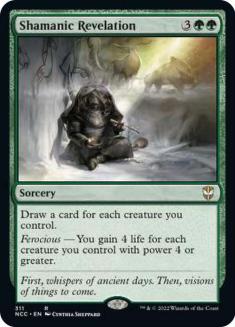
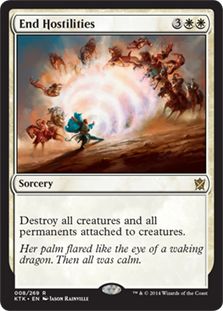
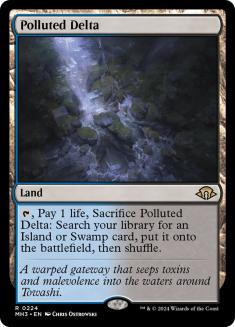
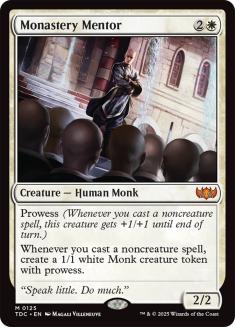
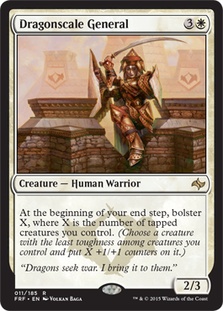
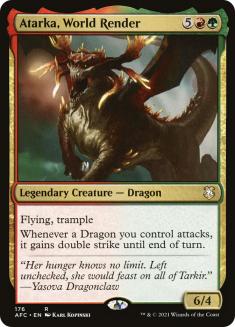
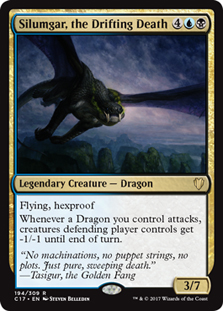
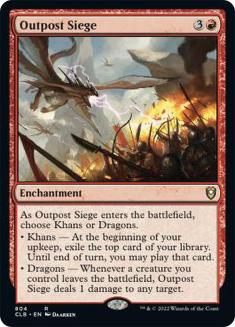

Let’s take a quick look at these one more time:
Ka-ching!
This is where I like to start in a Sealed pool; building around and supporting your best cards as opposed to looking for potential synergies is a good
place to begin even if you decide to go the synergy route.
At first glance, Atarka and Shamanic Revelation seemed like the best rares in my pool, followed by End Hostilities and Silumgar. I reviewed my pool and
weighed my decisions.
“Monastery Mentor and Dragonscale General seemed passable in Sealed, but they are both fairly weak by themselves, so I set them aside. Well, no, maybe they
are. No, no. Gotta stick to the Temur plan. Maybe splash Silumgar? I already had one dragon, so they’d – ”
“Five minutes left to deck build!”
I swiveled my head around to the display, whose big numbers showed a quickly disintegrating five minutes. I turned back to look at my pile, and it
basically looked like my picture except everything was jumbled together. I quickly shoved everything that wasn’t either Temur or playable off to the side
and hurriedly grabbed what I thought to be the best cards and jammed them together, leaving Silumgar off to the side as well. I quickly counted my needed
lands, threw in a few of the common dual lands, and began sleeving as pairings were called.
Round 1: Mardu
When I arrived at my table with my hastily gathered pile of my backpack, coat, and Prerelease box, my opponent was also still sleeving. When I sat down, he
said he was grateful that I was still getting ready too. We both finished sheathing our investment and he shared that this was his first Sealed event. I
wasn’t very confident in my deck, but maybe it could beat a first-timer.
Turns out it couldn’t. His Mardu deck came roaring out of the gates. In game 1, I played two creatures, both of which were killed with either a Murderous
Cut or a Mardu Charm. I never got sideways. In game 2, I audibled to the rest of my pool, a black/white smattering of good cards and what turned out to be
very dull walls like Rotting Mastodon, Sibsig Host, and Great-Horn Krushok. It didn’t help, doing about as poorly as the first.
0-1
Never how you want to start, but I finished early enough to provide an opportunity to shift my strategy. I unsleeved both slapdash decks and piled out my
pool again. My Temur deck’s red cards were by far the weakest, with my best spells including three Collateral Damage (I only played one) and two Goblin
Heelcutter. The white cards were the best cards in my white/black deck, so I decided to meld those two and shift my Temur deck to accommodate Silumgar,
moving to the more controlling Sultai build, complete with two Gurmag Angler, Whisperer of the Wilds, and a Map the Wastes to get everything online. Before
the next round, I’d completely shifted both strategies.
Round 2: Mardu (Beth)
In my round two, I faced another Mardu opponent, Beth. I made the comment that that’s my wife’s name, as I always do when I meet someone that goes by Beth
(as opposed to Liz, Elizabeth, or even the occasional Betty.) It’s funny how the most popular names have so many alternates, and you can just pick the one
you like the best.
I tried the red/white deck against her first, and it proved to be a powerful choice. Her deck was fast and low-cost, but it didn’t have the staying power,
and after two games with my new deck, I clinched victory.
1-1
Back on the tracks. After our tournament game, I tried the Sultai build against Beth as well, and it was even more effective. Looks like leading with the
red/white and switching to Sultai would be a good plan.
Round 3: Mardu (again)
No, “Again” was not the person’s name; sadly, I don’t think I got it. He was exceedingly polite, high-energy, and clear in his plays, announcing every
action clearly, which I do appreciate. It’s a good practice for yourself, especially when you’re just learning.
This guy was not just learning though, as his deck was on par with my round 1 opponent, with a Kolaghan, the Storm’s Fury to boot. Both games, it
contributed to or was directly responsible for my death. Even a game two switch to Sultai was futile in stopping the onslaught, so I moved back to the
losers’ bracket.
1-2
My threshold for most Prereleases is I’ll play a four-round minimum or an X-2 record, whichever comes last. So I’ll never leave before round four, but if I
end that round or those past it with an X-2, I’ll drop. That meant that, either way, I was planning to drop after my final game.
Round 4: Jeskai (Josh)
Josh was also very kind and gracious, and he and I were in similar positions; one more loss would force a drop from either of us. Although my plan was to
scoop to him even if he won, I wanted to play it out to earn the win if it was mine.
I used the Boros-hued deck in game 1 and was trounced firmly after a mulligan to six, much in the same way the Mardu deck from round one beat me. His deck
was heavily pressed around prowess and flyers, so I thought that the Sultai deck might be better geared for it.
I switched to it for game 2, and it did go better. I was able to resolve Orc Sureshot and playing creatures, including Silumgar, to start picking off his
creatures. He managed to pull two Mistfire Adept, which seems very powerful for a blue creature. I attempted to kill it with Orc Sureshot and Silumgar
triggers, attacking with the team. He cast a Take Up Arms and, although his tokens immediately died, his Mistfire Adept was saved for one more combat. He
untapped, cast Pyrotechnics on my eight-point life total and cracked back for exactsies.
1-3
Hmm. Well, that didn’t go great. I coyly admitted that I would have conceded anyway, even though I really wanted to win outright.
None of my matches included a game 3. Except for my round two match win, I did not win another game, even in practice games after the rounds were over.
Even though the card quality seemed decent enough, especially after switching out of the Temur plan, I couldn’t actually stick a win. Evasion was more
important than I usually give it credit for, and my removal-light pool really hurt me more than I expected. Jeskai and Mardu, two clans that were way off
my radar for Saturday, turned out to be some of the strongest in the room, with almost all my buddies saying that one of the two clans mercilessly crushed
them in their matches.
It was time to reassess; Jeskai, with its potential for combat tricks and efficient rares, might be a much better choice than a clunky, bruiser-based Temur
build. Mardu, similarly, had lots of innate, easy-to-use synergies that combined that best parts of aggro into an effective, aggressive package.
But that’s not the end of the story.
The following day, I was thirsty for a better finish. Our shop’s Two-Headed Giant event fired early that evening, so I decided to float up there without a
teammate in mind and see if I could get some more practice.
When I got to the shop, I walked up to the signup sheet. As a freelancer, my only requirement is that I know you before I team with you; otherwise, it’s
just two strangers trying to work together. As I glanced at the list of free agents, I didn’t see a soul on it I recognized. Moreover, the shop owner told
me he didn’t think any of the free agents were here anyway, leaving me stranded. All alone.
One guy I knew was playing EDH with another guy I knew; while one was off to work, the other was free, and I convinced him to play alongside me. Cary, a
familiar face in our local magic community, quickly agreed and we discussed strategy. His current EDH opponent and he had always had a control/aggro
strategy where he, Cary, played a removal and bomb-heavy package, while the other played an aggressive, tempo-oriented strategy. He thought Mardu or Jeskai
sounded like the best clan, and when pressured, he took Mardu and I grabbed Jeskai.
We sat down to build and were very pleased with our pools, getting tons of good red and white cards and powerful, top end cards, including two Ghastly
Manifestations (both from my half of the pool), Whisperwood Elemental, and Arcbond. He decided to go Jund, jamming all his removal spells and his dual
dragons, Kolaghan, the Storm’s Fury; and Atarka, World Render; to finish the game. I jammed three War Flare and two Sandblast, along with two copies of
Sandsteppe Outcast to fuel a high-creature count for the Flares. This deck seemed a whole lot better, and while Cary’s deck looked like a jumble, the card
quality was very high. Maybe I could keep the pressure on long enough for him to seal the deal?
Round 1: #TeamAbzan
As their team name implies, we were facing dual Abzan decks. Their build was a little slower than ours, favoring the more midranged favorites like
Whisperwood Elemental (which Cary Despised) and High Sentinels of Arashin. We did our best to keep the pressure on, and I leveraged combat tricks to keep
my opponents on defense. In a final push, we attacked with everything, and I cast Arcbond on his High Sentinels, which was blocking a Kolaghan at the time.
After his Sentinels took damage, each opponent was dealt five damage, totaling ten team damage and ending the game after combat damage.
1-0
Arcbond closing out the game! At first I thought it was overly ambitious or conditional, but it was the perfect card at that moment.
Round 2: Jeskai and Temur
This team, whose name I can’t recall, played it similarly to game 1, where Cary leveraged all his removal, and I bashed as hard as I could to put them in
Arcbond range. After some careful calculations, we attacked for enough that, after Arcbond’s delayed trigger effect, they were hit for twenty damage out of
nineteen life, and my Lightform’s lifelink brought us out of burn range.
2-0
Round 3: Team Chris (squared)
This team, which I assume was made up of two people named Chris, brought a Sultai and Temur build. We were able to amass a considerable force as the Sultai
Chris durdled and the other Chris tried to keep the team afloat with large creatures, which Cary promptly answered. His Warrior subtheme, supported by five
or six black Warriors and Raiders’ Spoils, came into play here, granting him some extra attacking power and a trigger or two. We won this one fairly
handily.
3-0
After this game, I reviewed the blue in my pool. At the moment, I was splashing for Narset only and had yet to cast her. There were several other strong
blue pulls, including Shu Yun, the Silent Tempest, Treasure Cruise, and Torrent Elemental that I was certain would make more impact. I added three
Swiftwater Falls and kept Narset, moving more firmly into my clan’s colors.
Round 4: Bob and Ryan
Now this one was funny. I knew both of these people outside of Magic. The former attended both my high school and undergraduate college, and the second
used to work the same place I do, but I’d yet to play either in Magic. Turns out they’d known each other for years. Small world!
Bob was on a Jeskai strategy that seemed to focus mostly on blue (though in our game afterwards I saw a black source), while Ryan was on the Temur plan.
Bob was stuck on three mana for a while and never got a Swamp, and while Ryan’s creatures were impressive, including Temur War Shaman, Shaman of the Great
Hunt, and even the surprisingly sturdy Temur Sabertooth, we were able to apply pressure enough to close the game with Cary’s removal and Kolaghan. A War
Flare from me provided meager but necessary assistance.
4-0
With just five rounds total and one other undefeated team, we split with them, dividing three booster boxes amongst four people.
4-0-1 (1st)
Somehow, out of a hastily assembled team and a clear gameplan, we’d managed to best almost thirty teams of Two-Headed Giant veterans and walk away with a
cool profit. The addition of blue was never actually relevant, but Cary boarded into more and more removal as the night went on, and it proved successful
for our team. I couldn’t be happier with how it turned out, and wouldn’t you know it, it was with two clans I’d never considered!
What I learned:
- Prowess is much better than I thought.
- Going wide is much better than going big.
- Removal is especially powerful, and even though it’s often overcosted (Reach of Shadows), you usually want it.
- Synergy, more than bombs, is the heralding feature of the format.
- It’s not a bad Sealed format, but it’s probably bonkers in Draft.
I am really excited about the deck I’m sharing with you next week and the week after that. We’ll have a new Standard event before that though, so
let’s hope we see something besides Siege Rhino and Jeskai Ascendancy on top!
How did your Prerelease go? Was Jeskai the standout at your event, or was Temur or Abzan the right choice for you? What’s your strategy for one-on-one
Khans Sealed, and how can I improve my Sealed game?


